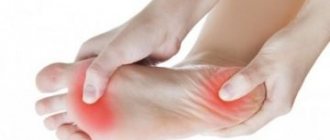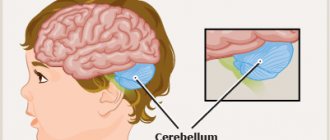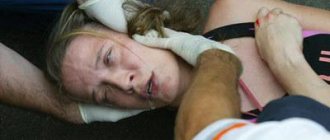What it is
Cataplexy is a disorder of muscle tone control. Mainly associated with strong, pleasant emotions. Happiness is one of the typical triggers. But they can also occur due to excitement, irritation, extreme surprise, or stress.
In most cases, the condition is associated with narcolepsy. Rarely appears against the background of pathologies: Prader-Willi syndrome, Wilson's disease and Niemann-Pick. These diseases are rare in medical practice.
A similar condition can occur with stroke, multiple sclerosis, head injury and encephalitis.
Etiology
In most cases (according to statistics, this is 70-80%), cataplexy is a consequence of another disease - narcolepsy. In addition, the following etiological factors may be the cause of the development of pathology:
- Lowenfeld-Henneberg syndrome;
- intoxication with alcohol or drugs;
- benign or malignant brain tumor;
- brain surgery;
- traumatic brain injury;
- infectious process in the body: encephalitis, meningitis;
- multiple sclerosis.
In the event that the cause of such a syndrome is narcolepsy, they speak of the primary form of the pathological process. In all other cases, secondary cataplexy occurs.
In addition, predisposing factors for the development of the disease should be identified:
- chronic fatigue;
- violation of the daily routine - long daytime sleep and insomnia;
- frequent stress, constant nervous tension;
- systematic abuse of alcohol or drug use;
- drug abuse, taking antidepressants;
- previous brain surgery.
In some cases, it is not possible to determine the cause of this syndrome.
Symptoms
Such disturbances mainly occur against the background of strong and pleasant emotions.
The attack is accompanied by weakness of the muscles of the arms and legs. The person cannot hold his head up, so it tilts to one side. In the severe stage, it is impossible to stay on your feet.
Consciousness is not lost, but the limbs seem weak.
Other symptoms also appear:
- increased sweating;
- facial hyperemia;
- heart rhythm is disrupted;
- facial muscles become immobile.
The duration of the attack can vary from 2-3 seconds to several minutes. Rarely does it last longer. Any emotion can provoke such a disorder: laughter, joy, anger, crying, fear.
With a sudden fall, the development of a pathological process is also possible. Cataplexy symptoms may vary, but generally they are pronounced.
Probable cause of cataplexy
A group of patients with cataplexy was monitored for 15 years to discover the cause of the disease, and the results were published in 2006. It was found that the lightning-fast shutdown of muscle tone during cataplexy is directly related to the hypothalamus (a part of the brain), or more precisely, to the special substance it secretes, orexin (hypocretin). Orexin is responsible for regulating wakefulness and arousal processes in the human body. With cataplexy, orexin is not produced enough or the receptors that perceive it are defective. The result of this is a massive suppression of the activity of spinal cord neurons that provide muscle tone. Why exactly there is a lack of orexin (or its receptors “break down”) in the body is not yet clear, but a direct connection has been identified between orexin deficiency and a lack of histamine, dopamine, and adrenaline in the nervous system. These neurotransmitters also keep the body awake and alert. Further research in this area will certainly be able to establish the true cause of cataplexy; the solution is probably already close.
When and who to contact
At the first suspicious sensation, you should consult a doctor. The disease manifests itself in varying degrees of complexity. Therefore, it is important to diagnose it in a timely manner.
Initially, you will need to consult a neurologist. Additionally, they are examined by an endocrinologist and a psychologist.
It is important not to confuse this condition with epileptic seizures or hyperkalemic paralysis.
Specifics of the disease
Muscle weakness, from subtle tension to complete blockage of movements, slurred speech, blurred vision - a typical picture of an attack. The average duration varies from a few seconds to 3 minutes, frequency – both once and daily.
A person is unable to independently interrupt its flow, while he is fully conscious.
At the Stanford Sleep Disorders Clinic, 100 patients aged 14 to 24 years were examined for the duration of attacks. The result revealed that 93% of them lasted less than 2 minutes, 6% lasted no more than 5 minutes, and only 0.94% lasted more than 5 minutes.
Clinical neurology specialists identify several forms of cataplexy activity, differing in intensity of distribution and severity:
- General (total) . It is accompanied by a complete weakening of the muscular skeleton, resulting in a risk of falling and injury.
- Partial (partial) . Individual muscle groups are affected, involuntary movements are observed - tilting the head, bending the knees, drooping of the jaw, limp hanging of the arms.
- Awakenings . It manifests itself in unsuccessful attempts to perform any action after sleep, mainly at night.
Both adults and children and teenagers are susceptible to attacks. The disease can be successfully treated, does not cause mental development defects, and regresses over time.
In a review conducted by the Stanford University Sleep Research Clinic, of 100 patients with cataplexy disorders, 62 stopped taking medications after 10 years of treatment.
Diagnostics
Patients who suffer from such an anomaly endanger not only themselves, but also those around them every day. The attack appears suddenly.
Particularly serious consequences occur when driving, eating, drinking, and production work. Given this risk, it is important to diagnose the disease in a timely manner.
At the first appointment, the doctor examines the patient’s medical history and listens to his complaints.
After this, he conducts an examination using the following procedures:
- MRI and CT;
- Electroencephalography;
- sleep monitoring using polysomnography;
- determining the level of daytime sleepiness;
- Epworth scale survey.
Complex diagnostic methods are necessary to determine the etiology of the disease. The examination helps to exclude the presence of concomitant pathologies and other systemic disorders.
Symptoms of the disease
The main indicator of the presence of a cataplexy disorder is a sudden, usually short-term, immobilization of the entire body or its parts.
Along with this, the following are observed:
- numbness of the facial muscles;
- redness/pallor of the skin;
- slow heart rate (bradycardia);
- increased sweating;
- general numbness;
- inability to hold the body in an upright position;
- blurred vision;
- decreased sensitivity of mucous membranes;
- speech disorder.
Treatment methods
The mild and moderate stage, which is not accompanied by the risk of injury, usually does not require drug therapy. The patient is recommended to make lifestyle adjustments.
Simple rules for the health of the body will help with this:
- prevention of emotional and physical fatigue;
- rejection of bad habits;
- eating healthy, nutritious food and drinks;
- avoid the use of sedatives and hypnotics;
- limit the influence of irritating factors.
If it is not possible to do without drug therapy, the patient is prescribed the following medications:
- tricyclic antidepressants;
- psychostimulants;
- selective inhibitors;
- drugs to strengthen the body.
Additionally, you will need to undergo psychotherapy courses. They prescribe training for self-hypnosis and control of one’s own emotions. If sleep has returned to normal, then physiotherapy is used.
Nasal drops with hypcretin are at the development stage. Perhaps they will be an effective medicine in the future.
Prevention and recommendations
Narcolepsy and cataplexy are conditions that have similar symptoms but different etiologies. The patient must learn to control his own emotions, consciousness, and prevent severe shock. It is important to be able to react calmly to sudden situations.
The attacks are accompanied by a threat to the life and health of the patient. Pathology affects the usual rhythm of life and work activity. Significant restrictions appear. Sometimes you have to change jobs.
Therefore, if suspicious symptoms develop, you should consult a doctor to avoid complications. Consultation with a neurologist, somnologist, or psychologist will help get rid of the progression of the disease.
Mythological interpretations[ | ]
Sleep paralysis has influenced numerous myths and legends from various cultures throughout time, including themes of alien abduction, shadow people, and the presence of evil spirits[31]. Sleep paralysis can also be seen in stories with a “walking” dead man, who usually “strangles” a person, the reasons for which can be attributed to the fact that the person took the place of the dead man, violated some prohibition, or the dead man is simply visiting loved ones[32]. Stories about sleep paralysis lie the basis of many beliefs in which a sleeping person can be influenced by various demonic creatures, including spirits, witches, succubi, genies, etc.[33] In foreign literature, sleep paralysis was previously also known as the “old witch” syndrome[34].
In East Slavic culture, sleep paralysis is the basis of many stories about the brownie, and depending on the story, the brownie may appear when falling asleep or waking up, while the person may be unable to move or call for help, there may be a feeling of suffocation or fear, etc. However, stories with all the circumstances described are difficult to come by. In stories, the brownie can appear in completely different images and behave in different ways, for example, strangling, making sounds, touching or causing nightmares[35].
In English the word "nightmare"
(nightmare), which in modern language is associated with dreams, was originally written with a capital letter, had a different meaning and always included a feeling of pressure on the chest.[36]
In the word “Nightmare”,
the second part of the word
“mare”,
according to one version, comes from the German “mara”, which means a demon or succubus[37], and according to another, it comes from the German
“mahr”
and the Old Norse
“mara”
(mara) - supernatural beings who sit on people's chests in their sleep, causing them to suffer[38]. Although mara has long been forgotten, the concept has been deposited in the culture of many languages. In Russian, kikimora is etymologically connected with this concept[38].
In Russian folk tradition, sleep paralysis is associated with the brownie, mara, kikimora and night light, which, according to legend, jump on a person’s chest in order to warn about any significant events.
In Egypt, there are beliefs that sleep paralysis is caused by jinn, spirit-like creatures that originated in Islamic culture.[39] In Chuvash mythology, there is a separate character for this phenomenon - Wubar, whose actions exactly coincide with the symptoms of sleep paralysis. In the Kalmyk tradition, this is the evil spirit of Khar Darna, which strangles in a dream and does not allow one to wake up [ source not specified 53 days
]. In Basque mythology, there is also a separate character for this phenomenon - Inguma, who appears in houses at night during sleep and squeezes the throat of someone sleeping, making it difficult to breathe and thereby causing horror [40]. In Japanese terminology, sleep paralysis corresponds to the concept of kanashibari, which is mythologically explained as astral catalepsy, in which a giant demon sneaks into houses at night and presses its foot on the chest of the sleeping person[41].









